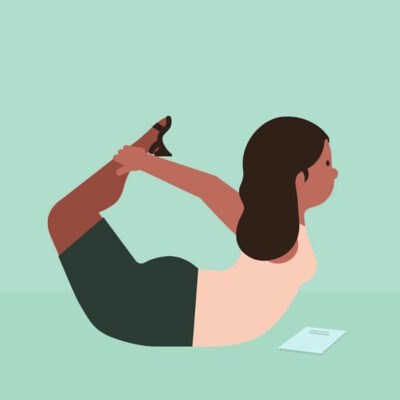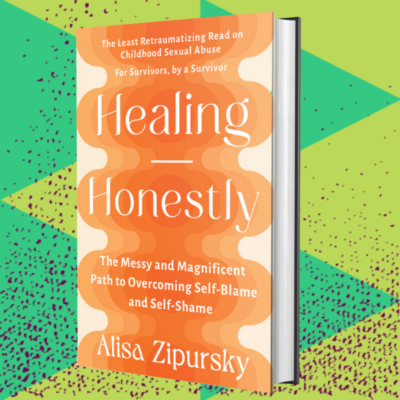This story references some of the physical aspects of living with trauma such as anxiety and being triggered
Alisa: I’ve been practicing yoga for the past six years, throughout some of the most pivotal times in my healing journey, and so often I find myself asking myself “Why?” For all the physical and emotional benefits I’ve received from yoga over the years, I’ve been triggered countless times (truly, I cannot count it).
Yoga is not about fancy leggings or famous guru teachers. All you need is your body and breath. – Tara
From skinny white yoga teachers thinking they’re “deep” by playing super emotionally-charged music during corpse pose, to constantly being the largest body in the room, by like, a lot, to being physically corrected in poses and not feeling empowered to say, “I don’t want to be touched”, to being expected by white teachers to chant in a language I don’t understand stemming from a culture and tradition that is never identified, credited or acknowledged, there are days yoga feels more harmful than healing for me.
Yet I keep returning to yoga, I think, in large part to the work of Jessamyn Stanley (definitely check her out!) and feeling that there must be some way the practice can serve my needs.
Then I met Tara. Tara and I met through this my website last year and quickly became internet friends. When she’s not busy being a badass 30-year-old lawyer, including working with the Domestic Violence Committee of the New York City Bar Association, Tara is teaching trauma-informed yoga to fellow sexual and domestic violence survivors through the organization Exhale to Inhale.
Yoga has taught me that I am strong, both physically and emotionally – even though I don’t always feel that way. -Tara
From Tara, I began learning about trauma-informed yoga and the work that so many survivors are doing in their own communities to harness this practice to aid in their healing. We chatted about the ways we can make yoga a safer, healthier and more accessible space to sexual violence survivors. Below is an edited version of that conversation:
What is trauma-informed yoga?
Tara: Trauma-informed yoga is mindful that students in any class may be a survivor or have had a traumatic experience. Teachers are mindful of the emotions, sensations, and limitations that survivors may have. In that way, we endeavor to set up the space and lead the class in a way that gives students choices and minimizes potential triggers.
What are some examples of what trauma-informed yoga for survivors might look like?
Tara: When I teach trauma-informed classes in the Exhale to Inhale methodology, there are several things that I do that differ from a typical studio class:
- Room set-up: I make sure that the room is set up correctly – lights remain on, mats laid out for students to choose, and students facing the door so that there are no sudden movements behind them that may trigger them. Also, we do not turn the lights off, nor do we use props.
- Music: I do not play music, which might trigger an uncomfortable memory.
- Touching students: I don’t touch my students; instead I offer them verbal suggestions. I stay on my mat in view of the students throughout the class, demonstrating only when necessary and observing my students.
- Sanskrit: We don’t use Sanskrit names for poses, in part because religion does not have to be a part of every person’s yoga practice.
- Invitational language: I always tell my students right at the beginning of class that the space is for them to do whatever they want with, even if that means lying in child’s pose or sitting still for an hour. Although I do lead suggested poses, I offer choices with each pose and try to keep students feeling like they are the ones making their yoga practice into whatever works best for them. To me, yoga is about reclaiming your breath and body – both things are often taken from survivors during traumatic experiences, and can be difficult to find again.
Alisa: No more triggering music! No being touched! No asking me to close my damn eyes! Those are such simple differences but, for me, would’ve completely changed my experience with yoga all these years.
How has yoga helped you in your healing from sexual and domestic violence?
Tara: Yoga has allowed me to reconnect with my body, breath, and mind. I am a survivor of both domestic violence and sexual assault, and those experiences kept me in fight-or-flight mode for a very long time. During that time, I lost my sense of self, experienced dysregulated emotions, and had debilitating panic attacks.
Practicing yoga, particularly trauma-informed yoga, has given me tools that I can use off the mat throughout the day to continue healing. I have learned how to regain control of my body and breath, and I am able to use my breath to calm myself in stressful situations. Yoga has created the space I needed to heal.
Yoga has taught me that I am strong, both physically and emotionally – even though I don’t always feel that way. It has also taught me the power of community, of finding a group of humans with whom you can share your experiences openly.
Have you found there are limitations to how yoga can support you in your healing?
Tara: Yes, at first I thought that simply practicing yoga would make me feel better, physically and emotionally. But it takes more than that. It also takes self-awareness and paying attention to the things that your body, mind, and heart need right in that moment. Some days when I’m feeling very triggered, I don’t have energy to practice yoga. On those days I need to adjust and find other methods of self-care, from cuddling my puppy to taking a nap or eating a tub of ice cream.
What is the most challenging aspect of using yoga for therapeutic purposes?
Tara: The most challenging aspect of using yoga is that it is not a “one size fits all” solution. Some survivors need a community or space where they can speak or write about their emotions. Other survivors feel like they need more of a physical workout. And sometimes it’s a combination of all of these. Each survivor is different, and I wouldn’t push yoga on someone as a guaranteed way to help someone heal. I just know that it has worked for me, and I encourage other survivors to find their “yoga,” whatever that might look like.
Resources to help you get started practicing trauma-informed yoga
Tara: If you’re already practicing yoga at home, there are so many videos and books that you can use to incorporate trauma-informed techniques into your practice. If you’d prefer to go to a studio, seek out one that feels like a safe environment for practice. My local studio offers chips to place on your mat, which you can turn over whenever you do or do not want physical adjustments. That alone made me feel like the studio was a safe space. I would also recommend looking out for workshops or trauma-informed yoga trainings – most of the time you do not need to be a teacher to attend, but you’ll definitely walk away with tools to incorporate into your own practice.
Alisa: I recommend googling “trauma-informed yoga” and your city too to learn about opportunities in your community. It’s amazing to see how many survivors have organized within their own communities to support each other through yoga.
I also recommend checking out Zabie Yamasaki (shout out to Amita Swadhin for telling me about Zabie) who is a survivor and yoga teacher and the founder of Transcending Sexual Trauma through Yoga. Great news! She teaches an 8-week, online course called Yoga as Healing Series for Survivors of Sexual Trauma, so anyone can sign up and pay to take class from her regardless of where you live!
Click here for a free audio trauma-informed yoga class with Zabie.
Exhale to Inhale also offers this free 30-minute online trauma-informed yoga practice too:
Below are a few of Tara’s favorites books on the subject:
- Overcoming Trauma Through Yoga, by David Emerson and Elizabeth Hopper, PhD
- Health, Healing, and Beyond, by T.K.V. Desikachar
- The Body Keeps The Score, by Bessel Van Der Kolk, MD
Both Tara and I follow Jessamyn Stanley on instagram. Her work is not centered on trauma, more centered on fat-activism and yoga, and following her has really shifted my relationship to yoga in the best way.
And now, I leave you all with this gem:

